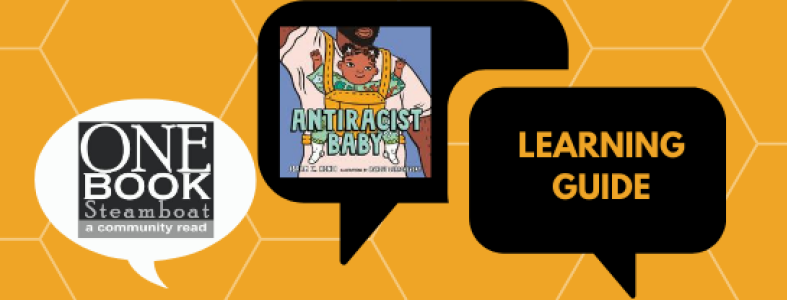Because research has shown that babies as young as six months old show racial preferences, learning to be antiracist is work that even our youngest of children can and must do. Antiracism goes beyond universal platitudes to “be kind.” Being kind does not mean we avoid seeing race, but that we celebrate racial differences. Furthermore, although we might teach our children that “anyone can do anything,” we must also teach them that racist barriers exist that stop us all from being truly free—and that we have the power to change this. — #DisruptTexts in the complete Learning Guide to Antiracist Baby
The following questions and conversation starters are excerpts from the Learning Guide to Antiracist Baby, which was created by four women of color educators, Tricia Ebarvia, Lorena Germán, Kim Parker, and Julia E. Torres, who have "come together to push our nation to disrupt the traditional literary canon and argue for a more inclusive, representative, and equitable language arts curriculum and pedagogy that our students deserve."
It is in your power to raise the antiracist children our world needs. You can do this. We must do this. — #DisruptTexts
- Check out your library copy of Antiracist Baby to share with a child, and read it together.
You can even listen together to the audio book. Bud has unlimited digital and audio copies available on loan.
- Start by considering how you have you been socialized to understand your own racial identity.
Antiracist parenting begins with yourself. First, identify the external and internal forces that shape your way of thinking about your own racial identity, including language you use (or don’t use) to talk about race, racism, and antiracism. What beliefs or feelings do you associate with talking about race and where do these come from? How have your experiences helped you or limited your understanding of your racial identity, and what can you do to address this?
- How have you been socialized to understand the racial identities of others?
Interrogate your understanding of people of di fferent races from your own. Ask yourself: In what ways have racial stereotypes a ffected my own thinking and how? Consider language: How have the words you have been taught informed your thinking of other racial groups?
- How well do you understand how racism functions in the policies and practices in your everyday life?
A key part of being antiracist is understanding that racist policies are the problem, not people. The more you deepen your understanding of structural racism, the more you will be able to see how these racist policies are re flected in your everyday life—and the more you will be able to point these out to your children in ways they can begin to understand. For example, you might live in a segregated neighborhood or attend segregated schools. Unless this is explicitly identi fied as a racist policy, then children might assume that this segregation is acceptable.
- Develop your language around race, racism, and antiracism.
The second principle in Antiracist Baby says to “use your words to talk about race.” Be sure you yourself have a range of descriptive, positive words to identify race and normalize discussions about race to remove the stigma around it. Furthermore, because race is a social construct, the words we use to talk about race change. As you continue your own learning, pay attention to the words and terms that critical race scholars and communities of color use and why.
- You might make a mistake in these conversations with your children.
It happens often and it is common. The best way to address that mistake is to do your own research to figure out what the correction is. Once you have the information, invite your child to a follow-up conversation. You may begin by saying, “I made a mistake when I explained -----, but now I have learned that it’s actually -----. Do you forgive my mistake? Let’s learn together about ----.”
Download the complete Learning Guide to Antiracist Baby as a pdf here.
One Book Steamboat
This guide is offered to enhance learning and discussion during the 2020 ONE BOOK STEAMBOAT cross-generational community reading of the antiracist works of Ibram X. Kendi, because change demands community-wide education, introspection & action.

